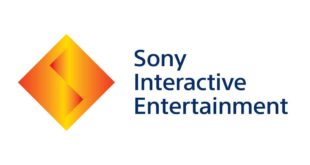In the world of game audio, Audiokinetic has long championed an artist-driven approach to sound pipelines with its pervasive Wwise solution.
And with the latest 2015.1 release, which follows last year’s significant overhaul, it is now positioning itself as a means to cement the bridge between game production and traditional digital audio workstations.
Broadly speaking, 2015.1 focuses on fostering efficiency, adding improvements to workflow and authoring capability.
But its most significant introduction may be its new integration with the Steinberg Nuendo 7 digital audio workstation – or DAW – from the 1984-founded company behind the household name of music production tools that is Cubase.
“For the first time that I can think of, a major traditional DAW developer has really taken notice of the game audio world, and has taken initiative to embrace it,” asserts Mike Drummelsmith, director, developer relations at Audiokinetic. “People were excited about it even before they had any idea what it all meant.”
The DAW the merrier
And for Drummelsmith, he and his colleagues hope this is just the start of a more general change that will see the world of DAWs established in the realms of music, TV and film crossing over with the working methods of games-makers.
“This should absolutely be viewed as a starting point,” he continues. “And the industry should keep the pressure on us, on Steinberg, and on other DAW makers to constantly improve the workflow of game audio professionals even further.”
Wwise 2015.1 also adds a healthy scattering of performance upgrades, including promised improvements to flexibility in the tech’s conversion settings, ‘pin to cache’ functionality to allow for streaming optimisations, and substantial Vorbis CPU gains on an array of the tool’s supported platforms.
Drummelsmith explains: “Our Vorbis decoding improvements and RTPC performance improvements specifically target areas that can give major gains to most teams out there – especially those really pushing the system. Meanwhile, our workflow improvements like batch renaming and some new profiler views really help teams to be able to keep track of hundreds, thousands or hundreds of thousands of actor-mixer objects, events, RTPCs and more, all the while having an easier way to track their behaviour when doing performance analysis and QA.”
A platform for customisation
The other most significant update comes in the form of Wwise’s new custom platform definitions and profiles, presenting powerful flexibility in a highly fragmented world.
“This basically allows developers to not treat platforms as single monolithic entities,” says Drummelsmith. “What does ‘Android’ mean? A modern handset running Lollipop, or one with a slower processor and older OS?
“This feature allows devs to target subsets of a single platform with a good amount of granularity, optimising the platform settings like compression and codec to improve performance on older hardware, or enabling certain effects on new devices to really show off what they can do.”
Wwise 2015.1 might not introduce as big a feature set as 2014.1, but it does tweak and refine in favour of the user’s workflows. And it proposes a new era for the traditional DAW, where games development is given a central role to play, and a new status at the very heart of established audio production.
Integration may be the key to that future, and in starting with Nuendo 7 the Audiokinetic team are off the blocks with a convincing opening sprint.

 MCV/DEVELOP News, events, research and jobs from the games industry
MCV/DEVELOP News, events, research and jobs from the games industry


